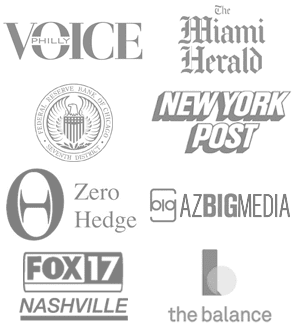In 2025, with home renovation spending projected to rise by 1.2% to $477 billion, homeowners are increasingly considering cash-out refinances to fund home improvements. A cash-out refinance replaces your existing mortgage with a larger loan, allowing you to access the difference in cash to finance projects like kitchen remodels, bathroom upgrades, or home additions.
However, with fluctuating interest rates, evolving housing market conditions, and the financial risks involved, is it wise to pursue a cash-out refinance for home remodeling in today’s market? We published this article to consider the benefits, risks, and alternatives, supported by two case studies, to help homeowners make informed decisions. The RefiGuide can help you find the best cash out refinance lenders for home remodeling, renovation and construstion.
Understanding the Cash-Out Refinance for Home Renovations
A cash-out refinance allows homeowners to tap into their home’s equity—typically up to 80% of the home’s current value, as determined by a professional appraisal. For example, if your home is worth $400,000 and you owe $200,000, you could refinance for up to $320,000 (80% loan-to-value ratio, or LTV), paying off the existing mortgage and receiving up to $120,000 in cash, minus closing costs (2–6% of the loan amount). This cash can fund renovations, which may increase your home’s value, improve livability, or address critical repairs.
The appeal of a cash-out refinance loan lies in its lower interest rates compared to personal loans or credit cards, often by 5–10%, and the ability to consolidate financing into one mortgage payment. It’s imperative to consider the cash out refinance requirements from banks and lenders in 2025. Additionally, interest on the portion of the loan used for home improvements may be tax-deductible, though you should consult a tax advisor to confirm eligibility. However, the decision hinges on market conditions, personal financial stability, and the type of renovation planned.
Benefits of Cash-Out Refinance for Home Remodeling
-
Access to Significant Funds: Homeowners with substantial equity can access large sums for major projects. For instance, a $50,000 kitchen remodel or a $100,000 home addition can be funded without depleting savings.
-
Lower Interest Rates: Mortgage rates, even for cash-out refinances, are typically lower than those for personal loans (7.5–36%) or credit cards (15–20%). In 2025, with rates stabilizing, this can mean significant savings over time.
-
Potential Increase in Home Value: Strategic renovations, like kitchen upgrades (96.1% ROI) or bathroom remodels (73.7% ROI), can boost property value, potentially offsetting the cost of borrowing.
-
Single Payment Convenience: Unlike a home equity loan or HELOC, which adds a second payment, a cash-out refinance consolidates everything into one mortgage, simplifying budgeting.
-
Tax Benefits: If the funds are used for qualifying home improvements, the interest may be tax-deductible, reducing the overall cost.
Risks and Considerations
Despite these advantages, a cash-out refinance carries risks, particularly in the 2025 market:
-
Higher Interest Rates: Cash-out refinances often have rates 0.125–0.25% higher than standard refinances. If your original mortgage has a low rate (e.g., 3–4% from the early 2020s), refinancing into a higher rate (e.g., 6–7%) could increase long-term costs.
-
Closing Costs: Fees, including appraisal and origination costs, typically range from 2–6% of the loan amount. For a $300,000 loan, this could mean $6,000–$18,000, reducing the cash available for renovations.
-
Increased Debt and Payments: Borrowing more increases your mortgage balance and monthly payments. Extending the loan term could also mean paying more interest over time.
-
Market Risks: If home values decline due to economic pressures, as cautioned by experts, you could end up owing more than your home is worth, especially if renovations don’t yield expected value increases.
-
Foreclosure Risk: Since your home is collateral, failure to make payments could lead to foreclosure, a significant risk if your financial situation changes.
2025 Market Conditions for Cash Out Refinance
In 2025, mortgage rates have stabilized but remain higher than the record lows of 2020–2021. The Joint Center for Housing Studies at Harvard predicts a modest 1.2% increase in renovation spending, signaling cautious optimism. Rising home values in many areas increase available equity, but potential rate hikes or a housing market correction could shrink borrowing power. Timing is critical: locking in a rate now may be wise if rates are expected to rise, but waiting could yield savings if rates drop further.
Alternatives to Cash-Out Refinance
Before committing, consider alternatives:
-
Home Equity Loan: A fixed-rate second mortgage that doesn’t affect your primary mortgage. It’s ideal for those with low-rate first mortgages but requires a second payment.
-
HELOC: A revolving credit line with variable rates, offering flexibility for phased projects. Closing costs are lower, but rates may rise over time.
-
RenoFi Loan: This renovation-specific loan allows borrowing based on the home’s post-renovation value, increasing borrowing power (e.g., up to 90% of future value).
-
Personal Loans: Unsecured loans with higher rates but no collateral risk. Suitable for smaller projects ($10,000–$50,000).
-
FHA 203k or Fannie Mae HomeStyle: These loans finance renovations directly, using the home’s future value, but require detailed project plans and inspections. The FHA cash out refinance plan is also recommended for financing home improvements.
Case Study 1: The Kitchen Remodel Success
Background: Sarah and Tom, a couple in Austin, Texas, purchased their home in 2018 for $350,000 with a 30-year mortgage at 4.5%. By 2025, their home is appraised at $500,000, with a remaining balance of $280,000. They want to remodel their outdated kitchen, estimated at $60,000, to improve functionality and resale value.
Decision: With a strong credit score (720) and a debt-to-income ratio (DTI) of 35%, they qualify for a cash-out refinance. They refinance for $400,000 (80% LTV) at 6.2%, paying off the $280,000 balance and receiving $112,000 after $8,000 in closing costs. They use $60,000 for the remodel and save the rest for emergencies.
Outcome: The kitchen remodel, completed in three months, increases their home’s value to $560,000, yielding a 96% ROI. Their new monthly payment rises from $1,420 to $2,440, but the single payment simplifies budgeting, and the interest on the $60,000 is tax-deductible. The couple plans to sell in five years, expecting the higher home value to offset increased interest costs. In this case, the cash-out refinance was wise due to their stable finances, high ROI project, and long-term homeownership plans.
Case Study 2: The Risky Addition Project
Background: Maria, a single mother in Chicago, owns a home valued at $300,000 in 2025, with a $180,000 mortgage balance at 3.5%. She wants to add a $100,000 in-law suite to accommodate her aging parents, believing it will increase her home’s value.
Decision: Maria opts for a cash-out refinance to borrow $240,000 (80% LTV) at 6.5%, receiving $52,000 after $8,000 in closing costs. Her monthly payment increases from $808 to $1,515, straining her budget (DTI rises to 45%). She proceeds, assuming the addition will boost her home’s value significantly.
Outcome: The project encounters unexpected costs, totaling $120,000. The home’s value increases to $360,000, but the ROI is only 50% due to market saturation of similar additions in her area. A job loss six months later makes the higher payments unmanageable, forcing Maria to dip into savings. She avoids foreclosure but regrets not exploring a HELOC or saving for the project, as the high interest rate and low ROI diminish the financial benefits.
Key Considerations for Cash Refinancing 2025
To determine if a cash-out refinance is wise, to finance home renovation, evaluate:
-
Financial Stability: Ensure your income and DTI (ideally ≤36%) can handle higher payments. A credit score of 620 or higher is typically required.
-
Project ROI: Focus on high-return projects like kitchens or bathrooms. Check Remodeling magazine’s 2024 Cost vs. Value Report for local ROI data.
-
Market Trends: Monitor interest rates and home value trends. If rates are rising, lock in now; if falling, consider waiting.
-
Equity Requirements: Most lenders require 20% equity post-refinance. Calculate your LTV to ensure eligibility.
-
Alternatives: Compare costs and flexibility of HELOCs, 2nd-mortgages for home improvements, personal loans, especially if you have a low-rate mortgage.
Takeaways on Cash Out Refinancing for Home Remodels in 2025
A cash-out refinance can be a smart way to fund home remodeling in 2025, offering access to significant funds at relatively low rates and potential tax benefits. However, it’s not without risks, including higher payments, closing costs, and market uncertainties. The success of Sarah and Tom’s kitchen remodel highlights the potential for high-ROI projects to justify refinancing, while Maria’s experience underscores the dangers of overborrowing or misjudging ROI. Homeowners should carefully assess their financial situation, project scope, and market conditions.
Consulting a trusted mortgage lender and tax advisor, and exploring alternatives like HELOCs or RenoFi Loans, can ensure the best financial outcome. In a market with rising renovation demand but uncertain rates, a cash-out refinance is wise only when aligned with clear financial goals and prudent planning.
Sources:
-
Joint Center for Housing Studies of Harvard University, 2025 Renovation Spending Report
-
Remodeling Magazine, 2024 Cost vs. Value Report
-
Bankrate, Cash-Out Refinance Guide
-
RenoFi, Renovation Financing Options

